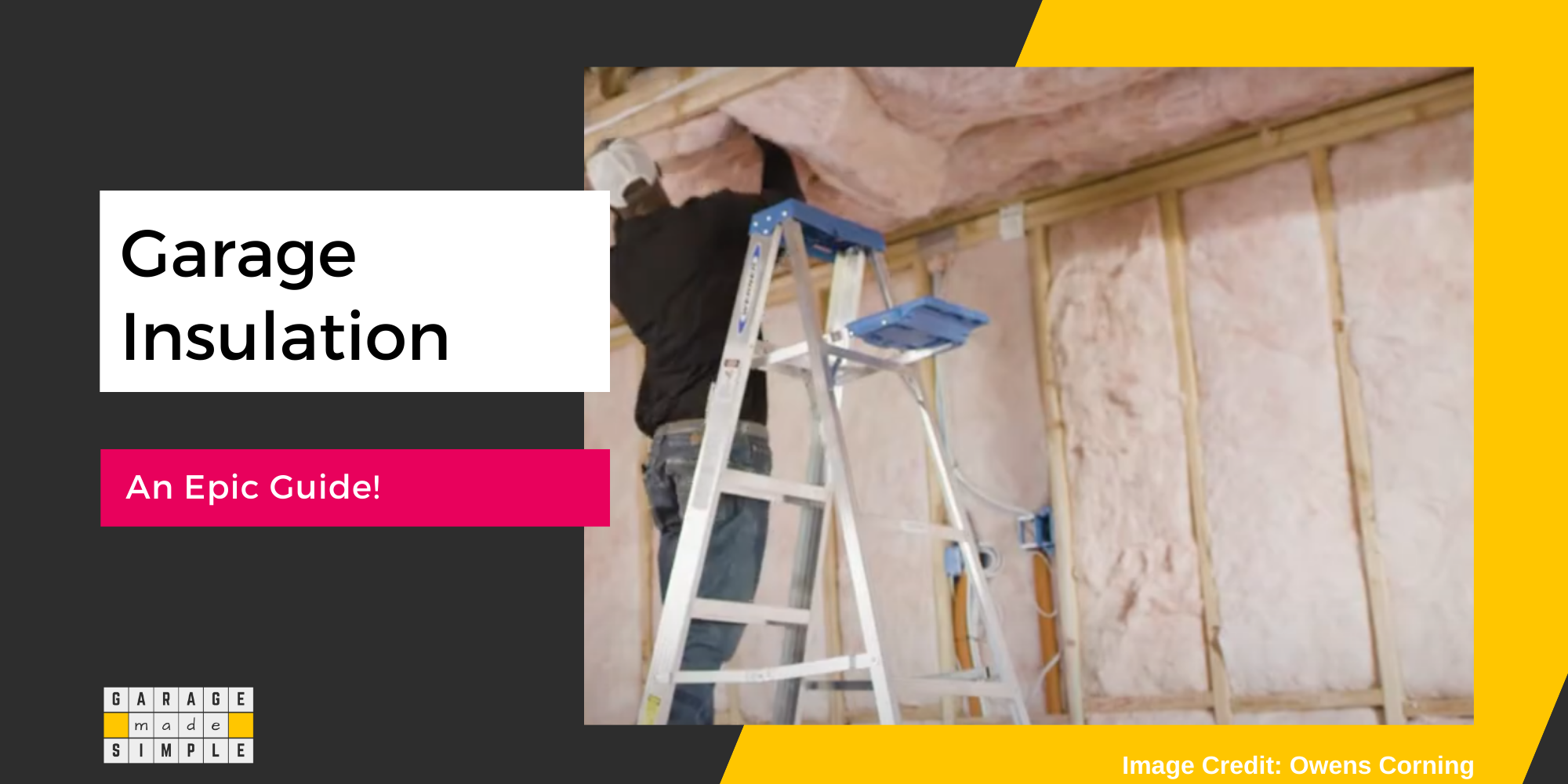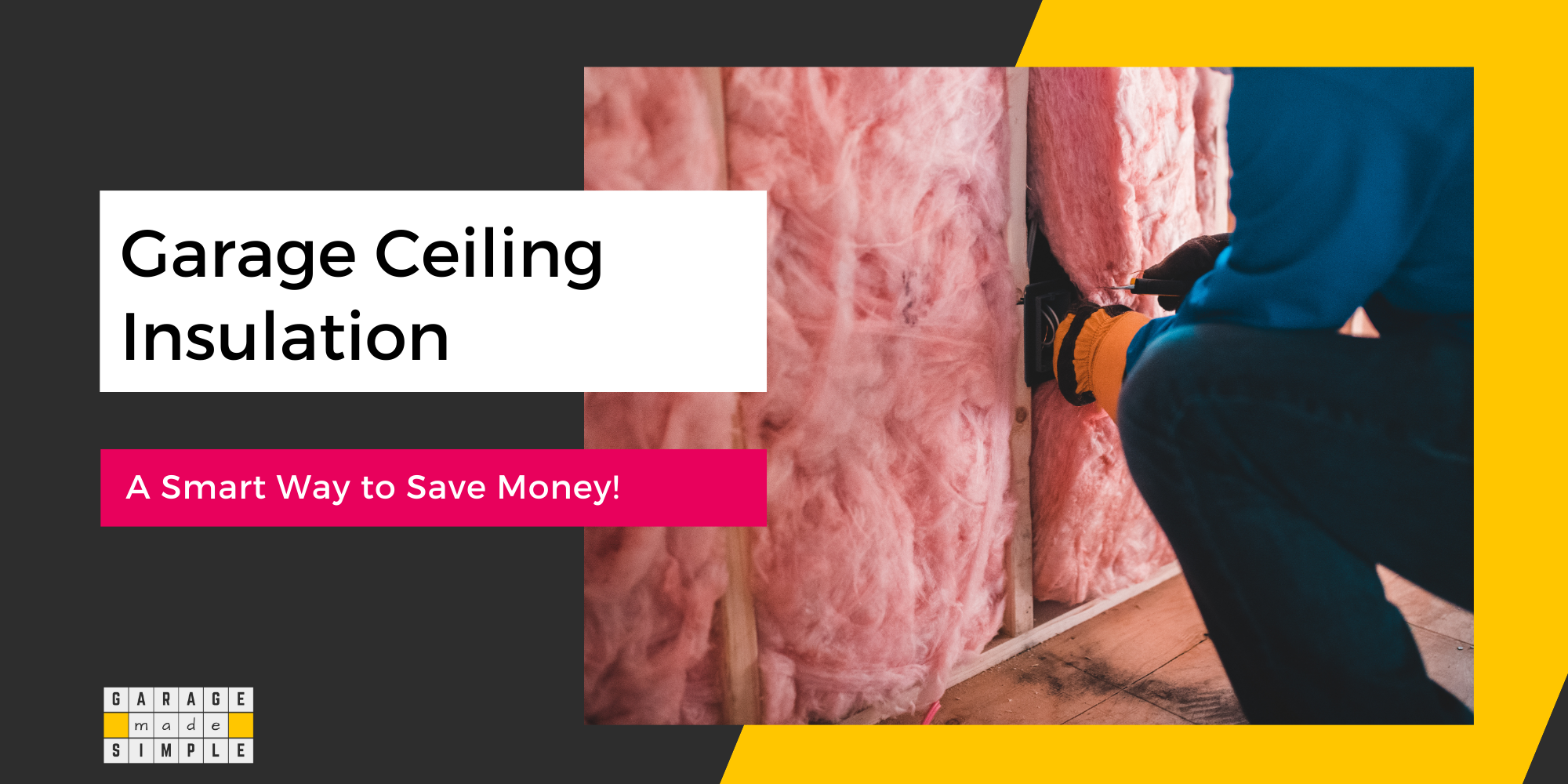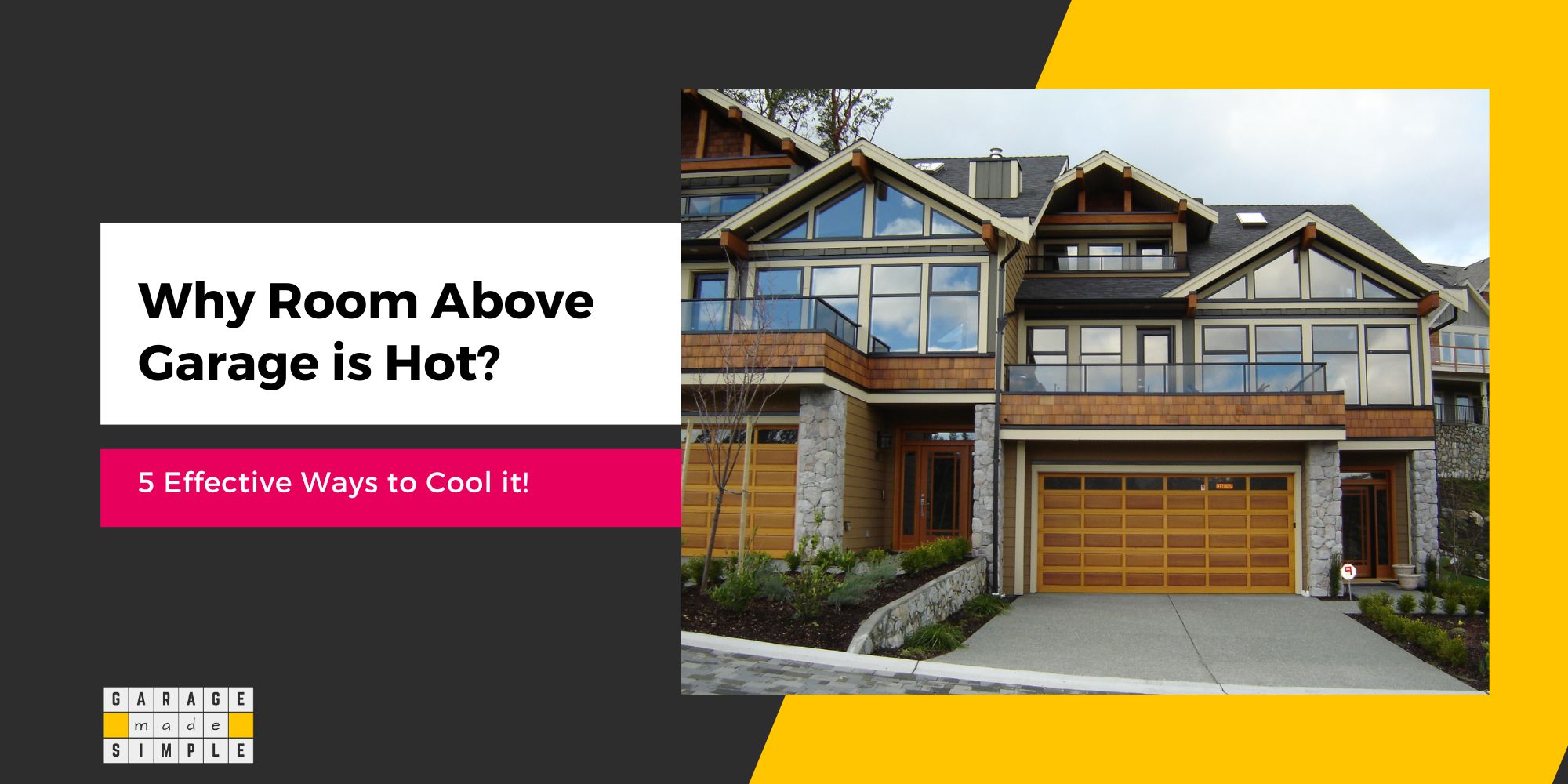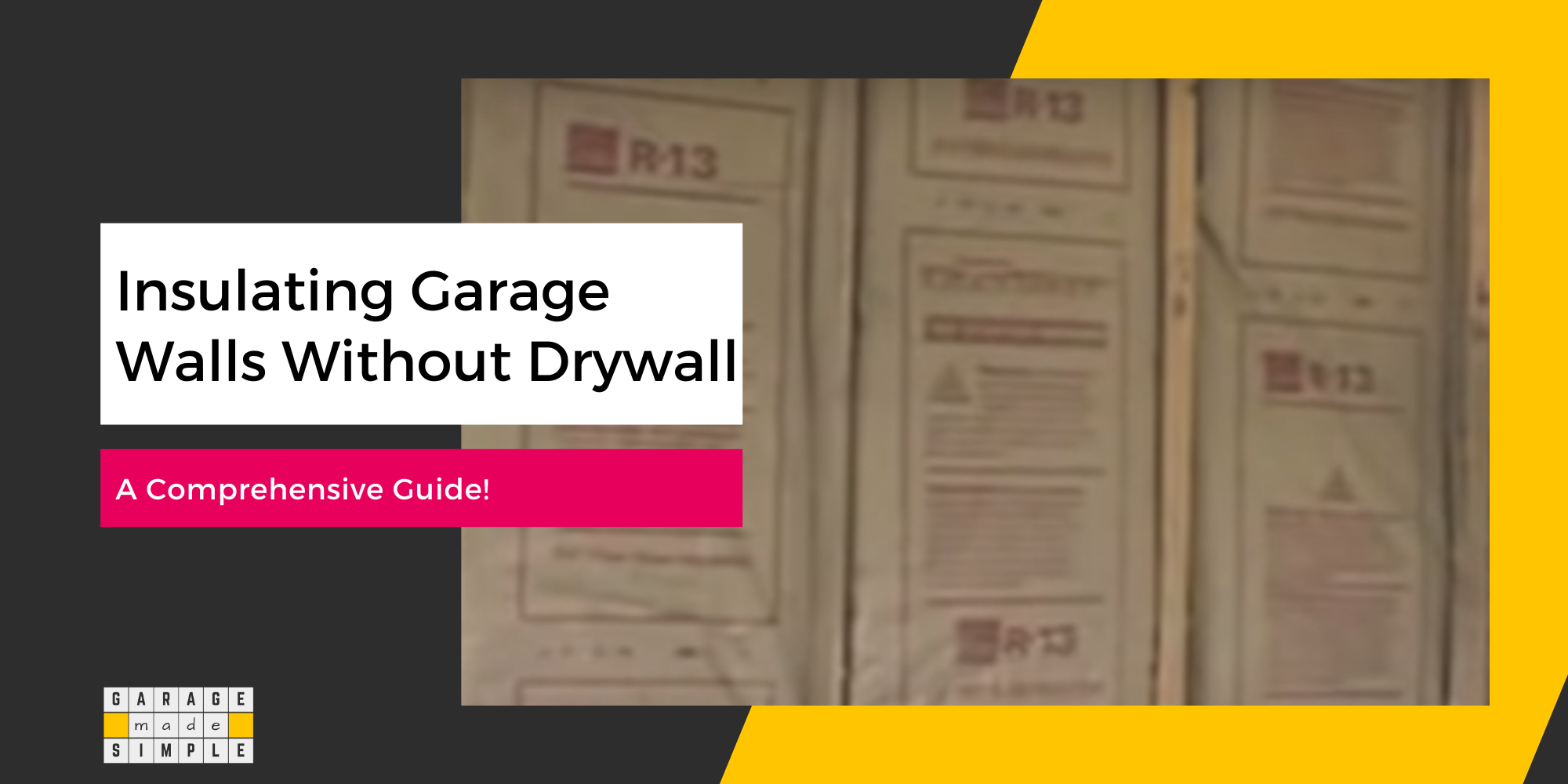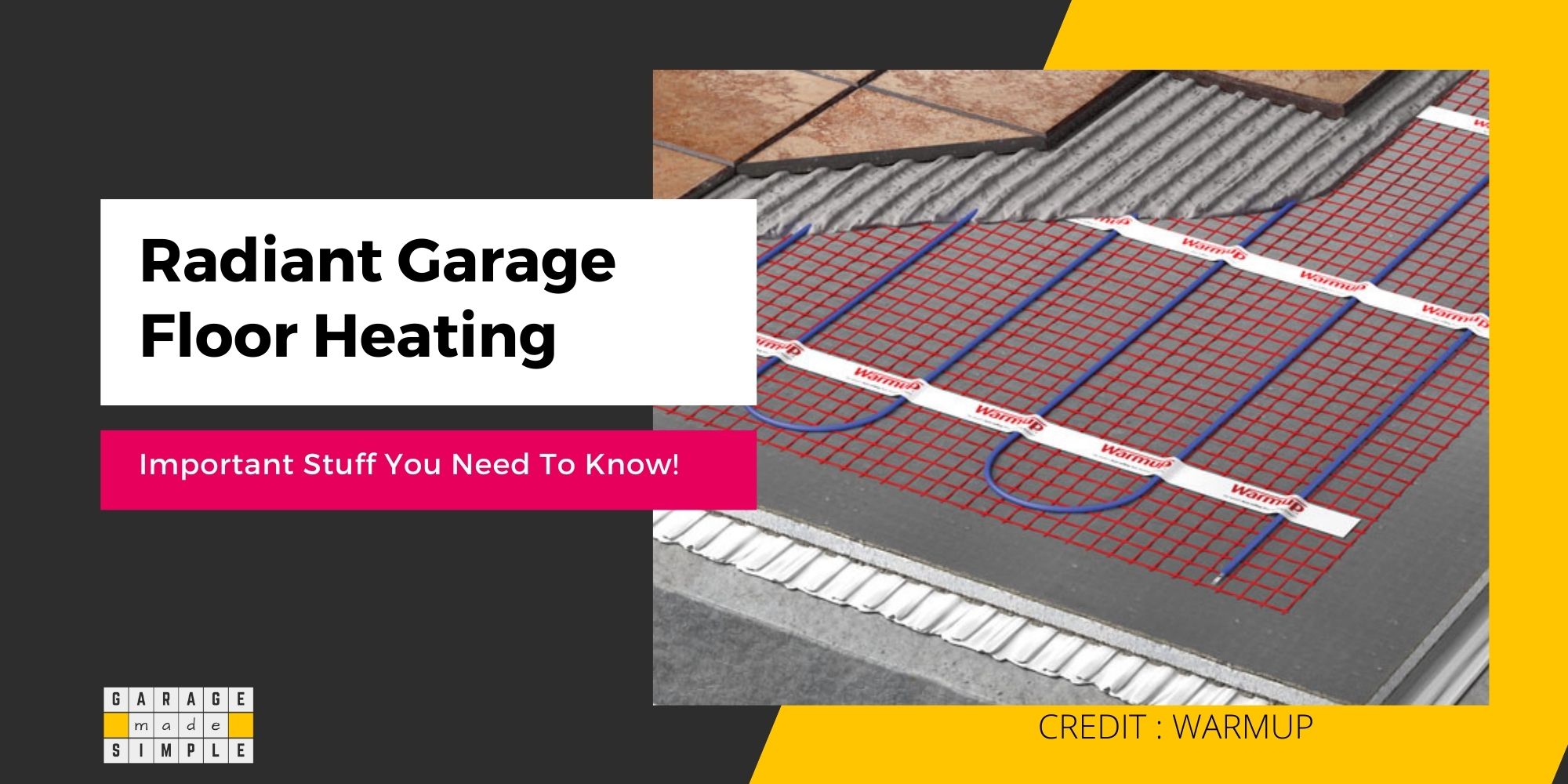Radiant Barrier vs Insulation for Your Garage: Which is Better?
As an Amazon Associate, I earn from qualifying purchases.
Radiant Barrier vs Insulation: What’s the Difference?
To keep your home cooler in summer and warmer in winter, you may have to consider radiant barrier vs insulation. But, what’s the difference between these two products?
Radiant Barriers:
Radiant barriers use a thin reflective surface attached to a sturdier base material such as engineered wood, to transfer heat through radiation.
Radiant barriers are most commonly used in attics, especially in hot climates to reflect back the heat from the sun and to keep the attic cool. Radiant barriers are most effective at keeping heat out in the summer and preventing heat gain in the winter.
Insulation:
Insulation is typically made from low density material that traps air in pockets, such as fiberglass or polyurethane foam. Insulation reduces the rate of heat flow through conduction.
Insulation is generally used throughout the garage, notably in wall studs, roof trusses and even under floor boards to reduce heat loss in winter. In summer, insulation helps to keep the heat from coming into the garage.
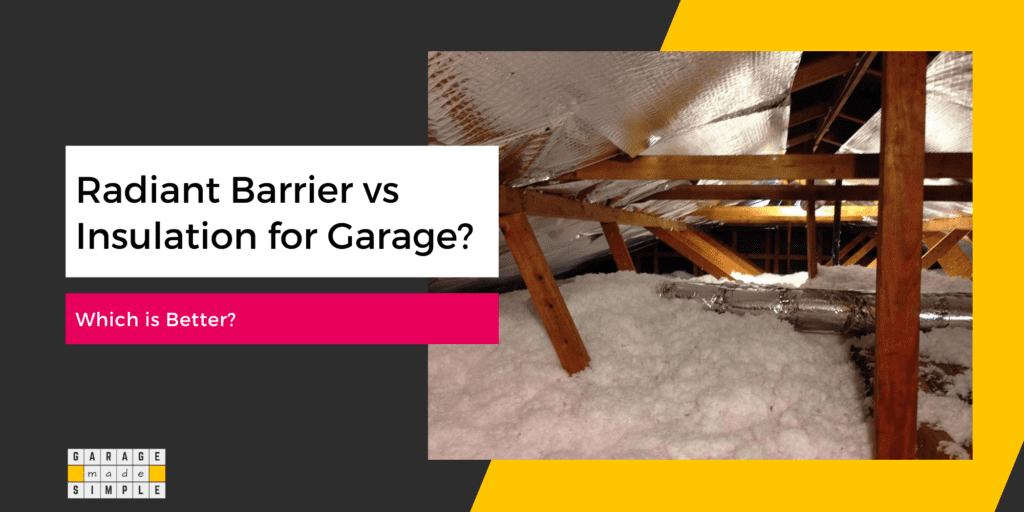
How Does a Garage Lose or Gain Heat?
Heat moves from a high temperature zone to a low temperature zone, just like water flows downhill. Heat does it in three ways
- Conduction
- Convection
- Radiation
Conduction is the process when heat moves from the high temperature zone to the low temperature zone through the solid material between the two zones.
Convection is the process in which the air in contact with the high temperature zone moves and takes the heat away to the low temperature zone.
For example the heat from the garage heater will be carried by the air in the garage to the colder garage wall. This is convection. The garage wall then dissipates the heat to the cold outdoors. That is conduction.
Radiation is the process when the heat moves from the high temperature zone to the low temperature zone through electromagnetic waves such as visible light, UV rays and infrared rays.
The best example of heat transfer by radiation is the heat earth gets from the sun. There is no conduction or convection involved. The heat transfers across vast empty space by radiation alone.
When it comes to garages, they typically lose heat in winter due to conduction and convection (if the door remains open). On the other hand they can gain heat in summer through all the 3 ways, possibly the most through radiation.
Radiant Barrier vs. Insulation: Advantages & Disadvantages
Here is a table that summarizes the advantages and disadvantages of radiant barrier vs insulation:
Radiant Barrier vs Insulation: Comparison
| Advantages of Radiant Barrier | Advantages of Insulation |
|---|---|
| Reflects Radiant Heat | Reduces Energy Costs |
| Helps Keep Garage Cooler in Summer | Improves Comfort |
| Thin and Lightweight | Increases Property Value |
| Cost-effective | Reduces Noise |
| Easy to Install |
| Disadvantages of Radiant Barrier | Disadvantages of Insulation |
|---|---|
| Does Not Insulate | Cost |
| Easily Damaged | Installation |
| May Lose Effectiveness | Moisture |
| Requires Ventilated Attic | Fire Hazard |
| Not Effective in Winter | Outgassing |
For more detailed information read on.
Advantages of Radiant Barrier
Radiant barriers have following advantages over insulation:
- Reflects: Radiant barriers reflect radiant heat. During hot summers the midday sun can get your garage uncomfortably warm. Radiant barriers can help keep your garage cooler in the summer.
- Thin and Lightweight. Radiant barriers are quite often just a thin foil that can be attached to the existing sheathing material.
- Cost-effective. Radiant barriers are typically less expensive than insulation.
- Easy to Install. Radiant barriers can be installed by most garage owners with basic DIY skills.
Disadvantages of Radiant Barrier
Radiant barriers have some disadvantages that you should be aware of before installing one:
- Does not Insulate. You should clearly understand that radiant barriers have no insulation properties. Radiant barriers, by themselves, can not keep your garage warm in cold climates.
- Easily Damaged. Radiant barriers do not have much structural strength on their own. The strength comes from the backing material. The foil can be easily damaged by scratching.
- Lose Effectiveness: The effectiveness of a radiant barrier is a function of its ability to reflect radiation. Accumulation of dust, moisture, snow etc can make the radiant barrier quite ineffective.
- Requires a Ventilated Attic. Radiant barriers should only be installed in attics that have good ventilation. If the attic is not well-ventilated, the moisture can condense on the radiant barrier and cause it to deteriorate.
- Not Effective in Winter. Radiant barriers are most effective in hot climates, where there is a lot of radiant heat. They are not as effective in cold climates.
Advantages of Insulation
Insulation has many advantages, including:
- Reduces Energy Costs. Insulation can help to keep your garage cooler in the summer and warmer in the winter, which can save you money on your energy bills.
- Improves Comfort. Insulation helps to create a comfortable living environment by keeping your garage at a more consistent temperature. As a result you can use your garage for more than parking your cars or storing junk. Make a home office or a garage gym.
- Increases Property Value. Insulation can increase the value of your garage by making it more energy-efficient and comfortable. Potential buyers are sure to pay a higher price.
- Reduces Noise. Insulation has sound proofing properties and can help to reduce noise pollution by absorbing sound waves. This is most helpful if you have a garage workshop.
Disadvantages of Insulation
Insulation has some disadvantages that you should be aware of before installing it:
- Cost. A necessary investment but insulation can be expensive, especially if you are having it professionally installed.
- Installation. Insulation can be somewhat difficult to install, especially in tight spaces.
- Moisture. Insulation can be damaged by moisture, so it is important to install it in a way that prevents moisture from getting trapped. If not done correctly, insulation can become home to mold and other pests.
- Fire hazard. Some types of insulation are faced with Kraft paper, which is combustible and can be a fire hazard.
- Outgassing. Some types of insulation, such as foam, can offgas harmful chemicals.
When Is It Best to Use a Radiant Barrier in Your Garage?
For your garage, go with a radiant barrier if you live in a dry heat zone such as Texas or Arizona. It’s a simple foil that reflects heat, making the garage cooler.
- Hot Dry Climates. Radiant barriers are most effective in hot and dry climates, where there is a lot of radiant heat from the sun. They will help to keep your garage cooler in the summer by reflecting the heat back outside.
- Garage Door Faces the Sun. If you have a garage door that faces the sun, a radiant barrier on the door can help to keep the heat out of your garage.
- Finished Garage. If you use your garage as a workshop or other living space, a radiant barrier can help to keep the temperature more comfortable.
- Budget Solution. If you are looking for a cost-effective way to keep your garage cool, radiant barriers are typically less expensive than insulation, and they can be easy to install yourself.
When Is It Best to Use Insulation in Your Garage?
It is best to use insulation when you live in an area with harsh winters. Insulation saves energy and money by keeping the garage comfy. Noise reduction is a bonus, great if you’ve got a workshop.
- Cold Climates. Insulation will help keep your garage warmer in the winter by preventing heat loss from the door, walls and attic.
- Multi-use Garage. If you use your garage for more than parking your cars or storing junk, insulation can help to make your garage more comfortable. Many people like to use some extra space in their garage as a workshop, gym or other living space.
- Energy Saving. If you are looking to reduce your energy bills, insulation can help to reduce the amount of energy you need to heat or cool your garage.
In addition to insulating your garage make sure to:
- Seal any cracks or gaps in the walls, ceiling, or floor. This will help to prevent heat from escaping.
- Ventilate the garage properly. This will help to prevent moisture buildup, which can damage the insulation.
When Is It Best to Use Both in Your Garage?
Actually most places in the US can get pretty hot in summer and fairly cold in winter, so ideally you should use both, radiant barrier and insulation in your garage.
Remember radiant barrier and insulation complement each other, when it comes to reducing heat loss in winter and heat gain in summer. A radiant barrier slows down heat transfer by radiation while insulation slows down heat transfer by conduction.
Let me take an example of the space above the garage. Attic insulation slows heat transfer, while radiant barriers block radiant energy. Combining them enhances insulation effectiveness.
The result is an energy-efficient and cost-effective solution.
The same principle works when you use a radiant barrier with insulation on your garage door. During winter, the radiant barrier reflects back the heat in the garage, conserving it. Garage door insulation slows down heat loss to the cold outside.
Thank you very much for reading the post. I do hope you found it informative and useful.

